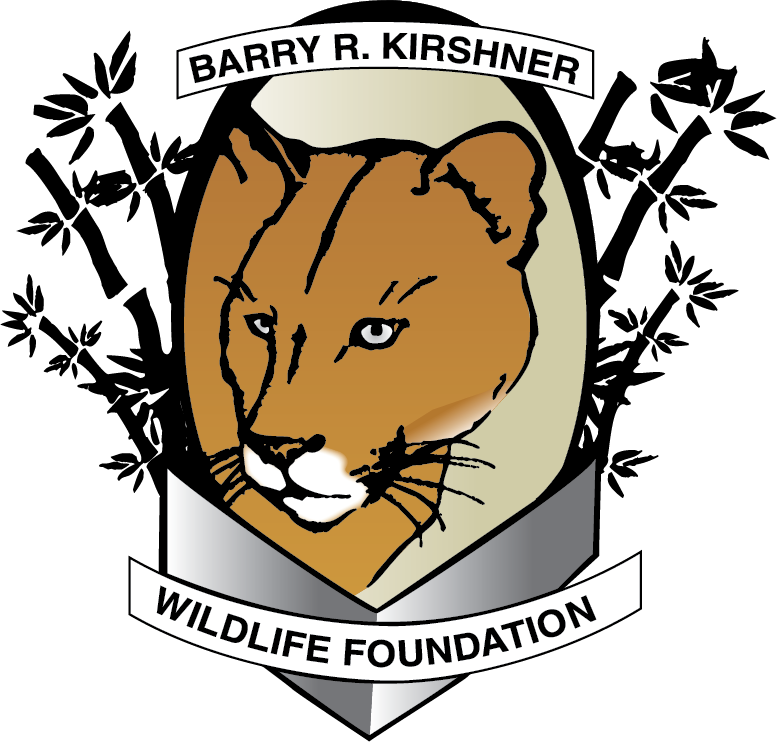HUTCH - Bobcat
This young male bobcat (Lynx rufus) was born in May 2018. Due to pre-existing health issues, the Foundation happily accepts him into our family and will provide him with specialized care, comfort, and love. He arrived weighing only 2 pounds, but after immediate veterinarian care, has since gained weight and has stabilized.
The Bobcat, although it does not bear the family name, is a distinct species in the Lynx genus. In comparison with the Canadian Lynx the Bobcat is generally smaller and it can be differentiated from the Lynx in a number of ways. The Bobcat has less pronounced ear tufts and cheek ruffs, and has much smaller feet and shorter hind legs. Its tail is white on the tip, whereas the Lynx has a black tail tip. It has a generally more patterned and varied coat coloration. Fur color ranges from light grey, to yellowish brown, buff, brown and reddish brown, and markings vary from tabby stripes to heavy spotting. Their habitat determines their color and patterns. Bobcats are always spotted to some extent, with some individuals patterned only on the undersides, while others have spots extending up the sides onto the chest and back. Both melanistic and albinistic Bobcats have been reported.
The bobcat hunts both by night and day and feeds mainly on hares and rabbit, but also eats rodents, birds and deer. They are efficient hunters, using stealth and patience to leap on their unsuspecting prey.
The Bobcat is found in Southern Canada, the US, and parts of Mexico. Its habitat varies from forests and mountainous areas to semi-deserts and brush land, though the most ideal is dense vegetation with lots of prey available. Bobcats are a solitary species, and though male territories can overlap, female territories do not.
Bobcat Statistics:
Body Length
Body Height
Weight
Gestation Period
Litter Size
Life Span
Status
40 inches
17-23 inches
10-18 lbs females, 16-28 lbs males
62 days
1-6 young
12-13 years
least concern


